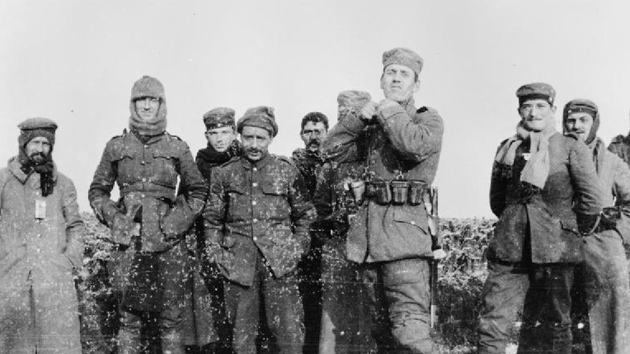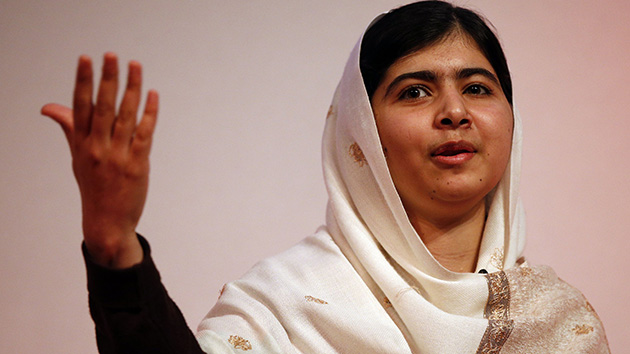
Wikimedia Commons
This story first appeared on the TomDispatch website.
Go to war and every politician will thank you, and they’ll continue to do so—with monuments and statues, war museums and military cemeteries—long after you’re dead. But who thanks those who refused to fight, even in wars that most people later realized were tragic mistakes? Consider the 2003 invasion of Iraq, now widely recognized as igniting an ongoing disaster. America’s politicians still praise Iraq War veterans to the skies, but what senator has a kind word to say about the hundreds of thousands of protesters who marched and demonstrated before the invasion was even launched to try to stop our soldiers from risking their lives in the first place?
What brings all this to mind is an apparently heartening exception to the rule of celebrating war-makers and ignoring peacemakers. A European rather than an American example, it turns out to be not quite as simple as it first appears. Let me explain.
December 25th will be the 100th anniversary of the famous Christmas Truce of the First World War. You probably know the story: after five months of unparalleled industrial-scale slaughter, fighting on the Western Front came to a spontaneous halt. British and German soldiers stopped shooting at each other and emerged into the no-man’s-land between their muddy trenches in France and Belgium to exchange food and gifts.
That story—burnished in recent years by books, songs, music videos, a feature film, and an opera—is largely true. On Christmas Day, troops did indeed trade cigarettes, helmets, canned food, coat buttons, and souvenirs. They sang carols, barbecued a pig, posed for photographs together, and exchanged German beer for British rum. In several spots, men from the rival armies played soccer together. The ground was pocked with shell craters and proper balls were scarce, so the teams made use of tin cans or sandbags stuffed with straw instead. Officers up to the rank of colonel emerged from the trenches to greet their counterparts on the other side, and they, too, were photographed together. (Refusing to join the party, however, was 25-year-old Adolf Hitler, at the front with his German army unit. He thought the truce shocking and dishonorable.)
Unlike most unexpected outbreaks of peace, the anniversary of this one is being celebrated with extraordinary officially sanctioned fanfare. The British Council, funded in part by the government and invariably headed by a peer or knight, has helped distribute an “education pack” about the Truce to every primary and secondary school in the United Kingdom. It includes photos, eyewitness accounts, lesson plans, test questions, student worksheets, and vocabulary phrases in various languages, including “Meet us halfway,” “What are your trenches like?,” and “Can I take your picture?” The British post office has even issued a set of stamps commemorating the Christmas Truce.
 An exhibit of documents, maps, uniforms, and other Truce-related memorabilia has been on display at city hall in Armentières, France. A commemorative youth soccer tournament with teams from Britain, Belgium, France, Austria, and Germany is taking place in Belgium this month. The local mayor and the British and German ambassadors were recently on hand for a soccer game at a newly dedicated “Flanders Peace Field.”
An exhibit of documents, maps, uniforms, and other Truce-related memorabilia has been on display at city hall in Armentières, France. A commemorative youth soccer tournament with teams from Britain, Belgium, France, Austria, and Germany is taking place in Belgium this month. The local mayor and the British and German ambassadors were recently on hand for a soccer game at a newly dedicated “Flanders Peace Field.”
Volunteers from several countries will spend three days and two nights in freshly dug trenches reenacting the Truce. Professional actors, complete with period uniforms, carol-singing, and a soccer match, have already done the same in an elaborate video advertisement for a British supermarket chain. One of the judges for a children’s competition to design a Truce memorial is none other than Prince William, Duke of Cambridge.
What Won’t Be Commemorated
Given the rarity of peace celebrations of any sort, what’s made the Christmas Truce safe for royalty, mayors, and diplomats? Three things, I believe. First, this event—remarkable, spontaneous, and genuinely moving as it was—did not represent a challenge to the sovereignty of war. It was sanctioned by officers on the spot; it was short-lived (the full fury of shelling and machine gunning resumed within a day or two, and poison gas and flamethrowers soon added to the horror); and it was never repeated. It’s safe to celebrate because it threatened nothing. That supermarket video, for instance, advertises a commemorative chocolate bar whose sales proceeds go to the national veterans organization, the Royal British Legion.
Second, commemorating anything, even peace instead of war, is good business. Belgium alone expects two million visitors to former battle sites during the war’s four-and-a-half-year centenary period, and has now added one or two peace sites as visitor destinations. The country is putting $41 million in public funds into museums, exhibits, publicity, and other tourism infrastructure, beyond private investment in new hotel rooms, restaurants, and the like.
Finally, the Christmas Truce is tailor-made to be celebrated by professional soccer, now a huge industry. Top pro players earn $60 million or more a year. Two Spanish teams are each worth more than $3 billion. The former manager of Britain’s Manchester United team, Sir Alex Ferguson, even teaches at the Harvard Business School. Five of the world’s 10 most valuable teams, however, are in Britain, which helps account for that country’s special enthusiasm for these commemorations. The Duke of Cambridge is the official patron of the sport’s British governing body, the Football Association, the equivalent of our NFL. It has joined with the continent-wide Union of European Football Associations in promoting the Christmas Truce soccer tournament and other anniversary hoopla. That packet of material going to more than 30,000 British schools is titled “Football Remembers.”
While such sponsorship represents only a tiny percentage of the public relations budgets of these organizations, they have surely calculated that associating soccer with schoolchildren, Christmas, and a good-news historical event can’t hurt business. All industries keep a close eye on their public image, and soccer especially so at the moment, since in many parts of Europe audiences for it are declining as a barrage of other activities competes for people’s leisure time and spending.
For nearly four years, as we reach the centenary mark for one First World War milestone after another, there will be commemorations galore across Europe. But here’s one thing you can bank on: the Duke of Cambridge and other high dignitaries won’t be caught dead endorsing the anniversaries of far more subversive peace-related events to come.
For example, although soldiers from both sides on the Western Front mixed on that first Christmas of the war, the most extensive fraternization happened later in Russia. In early 1917, under the stress of catastrophic war losses, creaky, top-heavy imperial Russia finally collapsed and Tsar Nicholas II and his family were placed under house arrest. More than 300 years of rule by the Romanov dynasty was over.
The impact rippled through the Russian army. An American correspondent at the front watched through binoculars as Russian and German enlisted men met in no-man’s-land. Lack of a common language was no barrier: the Germans thrust their bayonets into the earth; the Russians blew across their open palms to show that the Tsar had been swept away. After November of that year, when the Bolsheviks—committed to ending the war—seized power, fraternization only increased. You can find many photographs of Russian and German soldiers posing together or even, in one case, dancing in couples in the snow. Generals on both sides were appalled.
And here are some people who won’t be celebrated in “education packs” sent to schools, although they were crucial in helping bring the war to an end: deserters. An alarmed British military attaché in Russia estimated that at least a million Russian soldiers deserted their ill-fed, badly equipped army, most simply walking home to their villages. This lay behind the agreement that halted fighting on the Eastern Front long before it ended in the West.
In the final weeks of the war in the West, the German army began melting away, too. The desertions came not from the front lines but from the rear, where hundreds of thousands of soldiers either disappeared or evaded orders to go to the front. By early autumn 1918, the Berlin police chief estimated that more than 40,000 deserters were hiding in the German capital. No wonder the high command began peace negotiations.
Don’t hold your breath either waiting for official celebrations of the war’s mutinies. Nothing threatened the French army more than the most stunning of these, which broke out in the spring of 1917 following a massive attack hyped as the decisive blow that would win the war. Over several days, 30,000 French soldiers were killed and 100,000 wounded, all to gain a few meaningless miles of blood-soaked ground.
In the weeks that followed, hundreds of thousands of troops refused to advance further. One group even hijacked a train and tried to drive it to Paris, although most soldiers simply stayed in their camps or trenches and made clear that they would not take part in additional suicidal attacks. This “collective indiscipline,” as the generals euphemistically called it, was hushed up, but it paralyzed the army. French commanders dared launch no more major assaults that year. To this day, the subject remains so touchy that some archival documents on the mutinies remain closed to researchers until the 100th anniversary in 2017.
Parades for Whom?
From Bavaria to New Zealand, town squares across the world are adorned with memorials to local men “fallen” in 1914-1918, and statues and plaques honoring the war’s leading generals can be found from Edinburgh Castle to Pershing Square in Los Angeles. But virtually nothing similar celebrates those who served the cause of peace. The Polish-German revolutionary Rosa Luxemburg, who argued against the suppression of free speech both in the Kaiser’s Germany and in Soviet Russia, spent more than two years in a German prison for her opposition to the war. The eloquent British philosopher Bertrand Russell did six months’ time in a London jail for the same reason. The American labor leader Eugene V. Debs, imprisoned for urging resistance to the draft, was still in a federal penitentiary in Atlanta in 1920, two years after the war ended, when he received nearly a million votes as the Socialist Party candidate for president.
The French socialist Jean Jaurès spoke out passionately against the war he saw coming in 1914 and, due to this, was assassinated by a French militarist just four days before the fighting began. (The assassin was found innocent because his was labeled a “crime of passion.”) Against the opposition of their own governments, the pioneer social worker Jane Addams and other women helped organize a women’s peace conference in Holland in 1915 with delegates from both warring and neutral countries. And in every nation that took part in that terrible war, young men of military age—thousands of them—either went to jail or were shot for refusing to fight.
Jump half a century forward, and you’ll see exactly the same pattern of remembrance. Next year marks the 50th anniversary of the arrival of the first official US combat troops in Vietnam, and already a duel is shaping up between the thankers and those who want to honor the antiwar movement that helped end that senseless tragedy.
The Pentagon has already launched a $15 million official commemorative program whose purpose (does this sound familiar?) is “to thank and honor veterans of the Vietnam War… for their service and sacrifice.” Meanwhile, more than 1,000 people, many of us veterans of the US military, the anti-war movement, or both, have signed a petition insisting that “no commemoration of the war in Vietnam can exclude the many thousands of veterans who opposed it, as well as the draft refusals of many thousands of young Americans, some at the cost of imprisonment or exile.”
A recent New York Times article covered the controversy. It mentioned that the Pentagon had been forced to make changes at its commemoration website after Nick Turse, writing at TomDispatch.com, pointed out, among other things, how grossly that site understated civilian deaths in the notorious My Lai massacre.
Perhaps when the next anniversary of the Iraq War comes around, it’s time to break with a tradition that makes ever less sense in our world. Next time, why not have parades to celebrate those who tried to prevent that grim, still ongoing conflict from starting? Of course, there’s an even better way to honor and thank veterans of the struggle for peace: don’t start more wars.
Adam Hochschild’s most recent book, To End All Wars: A Story of Loyalty and Rebellion, 1914-1918, won the Dayton Literary Peace Prize and was a finalist for the National Book Critics Circle Award. During the Vietnam era, he was a US Army Reservist and a founder of the Reservists Committee to Stop the War. To stay on top of important articles like these, sign up to receive the latest updates from TomDispatch.com here.













